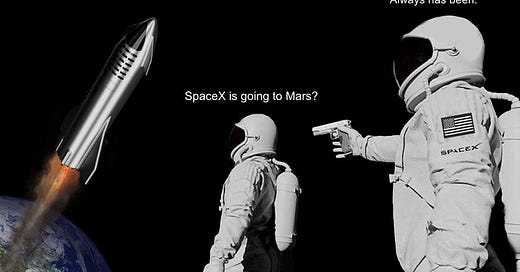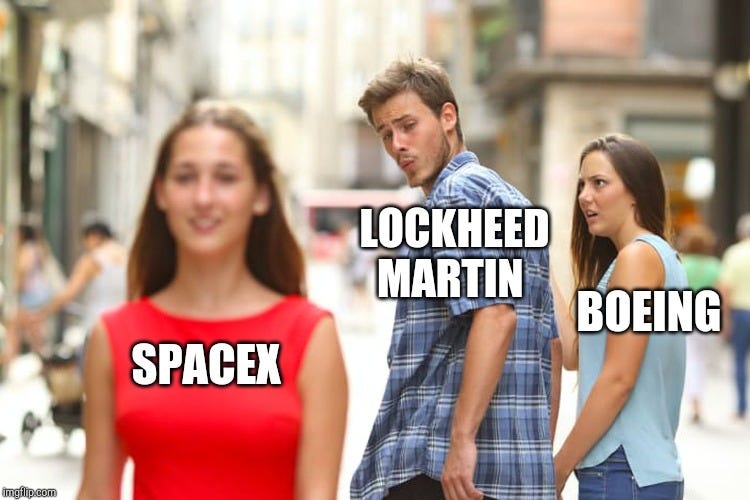What SpaceX achieved on Sunday was nothing short of remarkable—landing a rocket using a pair of massive mechanical arms, affectionately nicknamed “chopsticks,” to catch it mid-air. This might sound straight out of a sci-fi film, but the precision engineering and physics behind it are real and groundbreaking. In this essay, we explore how it was done, why it matters, and the science that made it possible.
Why Landing Rockets is a Big Deal
Rockets travel at incredible speeds when launching into space—reaching over 10 times the speed of sound. Historically, rockets were disposable, with their boosters falling into the ocean or burning up in the atmosphere after use. This wasn’t sustainable or cost-effective. Enter SpaceX, which changed the game by creating reusable rockets that can return to Earth, land and be used again.
But landing a rocket isn’t as simple as slowing it down. We’re talking about something that weighs 25 tons and needs to decelerate from hypersonic speeds to a complete stop, all while navigating through Earth’s atmosphere. Here’s how they do it.
The Three Steps to Landing
Boostback Burn: Once the rocket’s booster separates from the upper stage (which continues carrying the payload into orbit), the booster is moving at speeds up to 7,000 meters per second. To bring it back to the landing site, it performs a boostback burn. The rocket’s engines fire up in reverse to change its trajectory, essentially steering the rocket backward toward Earth. This is like trying to reverse a speeding car in space—a challenging maneuver that requires finely tuned thrust control.
Entry Burn: After the boostback, the rocket begins falling back through the atmosphere. This phase is tricky because atmospheric drag starts building up as the rocket descends. The drag force increases dramatically as the rocket approaches denser layers of air near Earth’s surface. The equation for drag force looks like this:
The faster the rocket moves, the more drag it experiences, which helps slow it down—but not enough. So, the rocket fires its engines again in a controlled entry burn to slow down further and reduce the stress caused by the friction of re-entry. This burn also helps to prevent overheating, as the rocket would otherwise be exposed to temperatures of over 1,500°C.
Landing Burn: As the rocket gets closer to its landing zone, it needs to slow to almost zero velocity. This happens with the final landing burn. Here, the engines fire once more, but at a much lower throttle, allowing the rocket to gently lower itself. Think of this as a controlled deceleration, where precision timing ensures the rocket doesn’t crash into the ground or overshoot its target.
Steering the Rocket
The real magic isn’t just in slowing down—it’s in controlling the rocket’s path and landing it accurately. Two systems help SpaceX achieve this:
Grid Fins: Once the rocket re-enters the atmosphere, four grid fins deploy from near the top of the booster. These act like small wings and create lift and drag to steer the rocket. By adjusting their angle of attack, the fins control the rocket’s pitch, yaw and roll. Think of them like the rocket’s rudders—helping to guide it home with precision.
Thrust Vectoring: Along with the grid fins, the rocket’s engines use thrust vectoring, which means tilting the engine nozzle slightly in different directions to adjust its course. This allows fine-tuned control over the rocket’s orientation during both re-entry and the final descent.
The Game-Changing Landing with Giant Mechanical Arms
Here’s where the innovation happens. Instead of using traditional landing legs, SpaceX employed a pair of massive mechanical arms attached to a tower to “catch” the rocket mid-air. While they’ve been dubbed “chopsticks,” these arms are far more sophisticated.
By catching the rocket with these arms, SpaceX eliminates the need for extra landing hardware on the rocket itself, which reduces weight and increases efficiency. The arms, made of high-strength materials like titanium or carbon composites, are designed to withstand the full weight of the rocket—around 25 tons.
But catching a rocket isn’t easy. The rocket’s landing must be incredibly precise, with the rocket descending at just the right speed and position. If it were off by even a few meters or a second too late, the rocket would miss the catch. This is why SpaceX uses an advanced system of sensors and computer algorithms to guide the rocket into the arms at exactly the right moment.
Physics in Play
The physics behind catching the rocket involves balancing its remaining kinetic energy with the forces of the mechanical arms. Once the arms grab hold of the rocket, they must absorb any remaining motion without causing the rocket to tip over. This is achieved using dampers—systems that absorb energy and reduce vibrations. Think of it like gently catching an egg—you want to stop its motion without breaking it.
The rocket’s descent velocity and landing angle are adjusted continuously by onboard computers, which receive real-time data from GPS, inertial measurement units (IMUs) and other sensors. This feedback system allows the rocket to correct its path even in the final seconds of landing.
Why This Matters
This innovation takes rocket reusability to the next level. By catching the rocket with mechanical arms instead of landing legs, SpaceX can streamline the process, turning rockets around for new missions even faster. The precision required here not only highlights how far technology has evolved since the early days of spaceflight, but it also showcases how far ahead SpaceX is compared to other aerospace companies. While competitors are still struggling to achieve basic reusability or scale, SpaceX has developed systems that integrate cutting-edge engineering and physics, keeping them years ahead in the field.
As rockets become increasingly reusable, the cost of launching into space decreases, creating new opportunities for scientific research, exploration, and commercial ventures. With each successful landing, we get closer to a future where space travel becomes as routine as taking a flight.
SpaceX’s mechanical arms system isn’t just a technical marvel; it’s a glimpse into the future of space technology. The journey to Mars and beyond is no longer just a distant dream, and with SpaceX’s ongoing innovations, that future is arriving faster than anyone expected.







